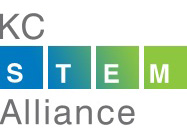07 May Two-for-One Deal: Earning College Credit for STEM in High School
Some high schools are offering students a chance to take college courses at the same time – and start earning a STEM degree earlier.
Faced with meeting a demand for workers with science, technology, engineering and mathematics skills, a growing number of high schools and colleges around the country are teaming up to offer more-advanced coursework at the secondary-school level. These STEM dual-enrollment programs expose teens to university-level material and give them the chance to make progress toward a degree.
The goal is to have our graduates “career ready or college ready,” says Pat Konopnicki, director of technical and career education for Virginia Beach City Public Schools. If it’s the latter, and “they can go with advanced academic standing, that’s great.”
There are other benefits as well. Some students are attracted to subjects they might have otherwise overlooked. Others leave high school already trained for a career. And those who go to college are more prepared and can save money.
For years Virginia Beach schools have been offering high school students the chance to earn industry credentials in STEM areas, but being able to earn college credit is something new. The program, dubbed “Mechatronics,” is part of Virginia Beach Mayor William Sessom’s initiative to help supply labor for the local manufacturing industry, Konopnicki said. Starting next year, as many as a 1,000 students will take electronics and mechanical systems courses at a third of the regular cost at Tidewater Community College.
In Cincinnati, 18 suburban-area high schools have partnered with the University of Cincinnati to offer college-level engineering courses.
The initiative got its start back in 2006 when the administrators of two all-girl schools reached out to UC engineering professor Eugene Rutz looking for ways to expose their students to his field of expertise.
Rutz, who was eager to draw more women into engineering, hit the ground running to develop a curriculum that would be affordable and scalable. The result: A “flipped classroom” model where instruction is delivered by professors through video modules. High school teachers, who receive some professional development training from UC, , complement the instruction by leading a classroom project and helping to explain the material.
Starting in 2012, participating students have had the option of receiving college credit and 141 students did so at a third of the normal cost. This academic year, the number increased slightly to 156 students. More than 500 students have taken the course in recent years, but not all for college credit.
While the actual numbers might be modest at this point, Rutz is excited about the impact.
At Mount Notre Dame, an all-girls high school, “over half of the participating students chose to pursue engineering, some years,” Rutz said. “I think it’s remarkable success.”
And Rutz is excited for its growth potential. The course materials are built on an open-source wiki site. Already he has received calls from educators in Guatemala and Alaska who are interested in offering the course in their schools.
The Cincinnati flipped classroom model is just one of many STEM dual enrollment programs taking place from coast to coast.
South Texas College offers a “dual enrollment academy” to high school juniors who want to earn their associate degree in medical science, computer science or engineering by the time they graduate from high school. Since the initiative started in 2005, more than 500 students have participated.
Over in New Jersey, the Passaic County Community College (PCCC) offers 13 STEM courses to local high school students interested in receiving college credit.
“The program has opened many doors for students that didn’t consider STEM as a possible career option,” Gonzalo Perez, STEM program director at PCCC, told US News. “Some students have earned up to 24 credits, saving them valuable time and money towards their college studies.”
Other high schools that specialize in STEM subjects overall, like P-TECH in New York, also offer early college opportunities. Through a partnership with the New York City College of Technology at CUNY, P-TECH students can earn an associate degree in either computer science technology or electromechanical engineering technology.
And some players outside of the traditional school system, like Project Lead the Way,make it easier for high school students to obtain university credit in science and math-related subjects. Project Lead the Way, which offers STEM programs in K-12th grade, has partnered with approximately 100 colleges that will offer credit to high school students that take a PLTW course. The organization does not track how many pupils take advantage of this opportunity.
Jonathan Rothwell, a fellow at the Brookings Institution who studies the STEM labor market, is encouraged by all of the dual-enrollment programs.
“For too long people that have focused on STEM skills and workforce shortage issues have looked only at Ph.D.-level skills and the most elite forms of education,” Rothwell said. “When you look at what employers want, it’s very rarely that high-level skill that comes from many years of academic training.”
Rothwell, who authored a paper on “The Hidden STEM Economy,” explains that there are tremendous job opportunities for workers with STEM skills, but who do not necessarily have a bachelor’s degree. The dual enrollment programs help prepare students for good jobs and succeed in higher education, Rothwell says.
“The graduation rate from community colleges are abysmally low nationally,” Rothwell says. “If you can get students better prepared for an associate degree before they graduate, you’ve gone very far in addressing the drop out crisis at the post-secondary level.”
By Eliza Krigman, US News & World Report




